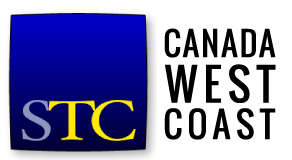 Much of the existing writing about ethics in technical communication is, quite rightly, complex and in-depth. This article is intended as a bite-sized alternative to encourage readers to reflect on how to proactively apply ethics to their work.
Much of the existing writing about ethics in technical communication is, quite rightly, complex and in-depth. This article is intended as a bite-sized alternative to encourage readers to reflect on how to proactively apply ethics to their work.
Parts of this article come from a conversation with Keith Skene, director of the Biosphere Research Institute and lecturer in design ethics at the University of Dundee, Scotland.
What do we mean by ethics?
Ethics relates to a way of being, the practice of determining — and acting in line with — what is right and wrong. Ethics is about doing what is judged to be good for people and society; it is also about what minimizes harm.
How do organizations apply ethical principles?
On a personal level, morals and values emerge from life experience and do not always neatly line up with those of other people. On an organizational level, ethics involves the use of regulations, guides, or codes of conduct, to provide a shared framework of what is right and wrong in practice. Organizational frameworks can move the focus away from interpersonal differences of opinion; they outline fundamental principles, expectations, and practices that are collectively designed to promote good and prevent harm. Some examples:
- Society for Technical Communication’s Code of Conduct
- Institute of the Future’s Ethical OS [Operating System] toolkit
- User Experience Professionals Association’s UXPA International Code of Professional Conduct
- Engineers Canada’s Code of Ethics
Harm can take many forms. For example, safe-usage information that is missing from an instructional manual could lead to physical injury; insensitive terminology could leave people feeling marginalized and misrepresented; failure to comply with copyright laws could lead to a plagiarism lawsuit. Harm is not always intended, but words can have unintended consequences.
Skene says that an effective code of ethics recognizes the importance of feedback loops and the two-way nature of communication in informing an organization’s practice:
“Using ethical codes, we can see if communication has achieved what we wanted it to, and if it has achieved anything negative. Feedback is really important in all of this; be prepared for it to be anything, because it is so complex. It’s no longer ‘I need to get my idea into you,’ but ‘I need to hear how you’re receiving this but also what you think of it.’ You should be flexible enough to take account of these things to inform and inspire you in your communication back to them.”
How can I apply personal ethics to my work?
Research by the Montreal AI Ethics Institute shows that universally applying core ethical codes is not enough on its own, as they will never satisfy all situations and eventualities. Such codes can also unconsciously favour some people or groups over others. Some organizations with ethical codes have been able to cause a lot of damage; in the words of New York Times columnist Charles M. Blow, “One doesn’t have to operate with great malice to do great harm. The absence of empathy and understanding are sufficient.”
The right to judge what is right and wrong for another person is a philosophical minefield. However, Skene recommends focusing on your own personal values and recognizing the amount of ethical stress that particular situations cause you, to define your own limits:
“Ethical stress comes from when you’re in a situation that you’re not ethically resonant with. I like to be able to sleep contented at least about myself, about what I’ve done and my actions.”
The key thing is to be aware of, and honest about, your own position and moral compass, as described by technical writing professor Adam Rex Pope. Skene advises looking at what you are being asked to do through a lens of its potential impact on the widest spectrum of people you can imagine. Be prepared to ask questions such as:
- What are the possible consequences of this technical advice?
- Am I empowering people with this information?
- What am I hoping it will achieve?
- Along the route, what kinds of things could this affect?
- How could this person respond to that?
Ethical practice is about what is positive and empowering, not just about avoiding negative consequences. One personal value of Skene’s that perhaps could be applied universally:
“We need to do what we can to build good things.”
